After the China Meteorological Administration warned of a cold snap earlier this month, we can’t help but wonder if we will see a repeat of the devastating 2008 winter storms.
Thirteen years ago on January 25, the third of four waves of heavy snowfall and freezing rain brought China’s south-central region to its knees. Sadly, 129 people lost their lives as a direct result of the storms, however, experts suggested that the death toll could have been much higher.

The snow-covered Pavillion of Prince Teng in Nanchang, Jiangxi Province. Image via Wikimedia
A collaborative research paper published by the American Meteorological Society noted that relatively warm average temperatures spared the lives of many left stranded and without power. As a result, the millions of people who were stranded without power for several weeks were able to survive the temperature itself.
One of the most debilitating factors was the ice. In the provinces of Hunan, Guizhou, Jiangxi, Guangxi, Hubei, Anhui, Yunnan, Zhejiang, Guangdong and Henan, freezing rain with a record-breaking radial thickness of up to 50-100 millimeters was recorded by the China Meteorological Administration.
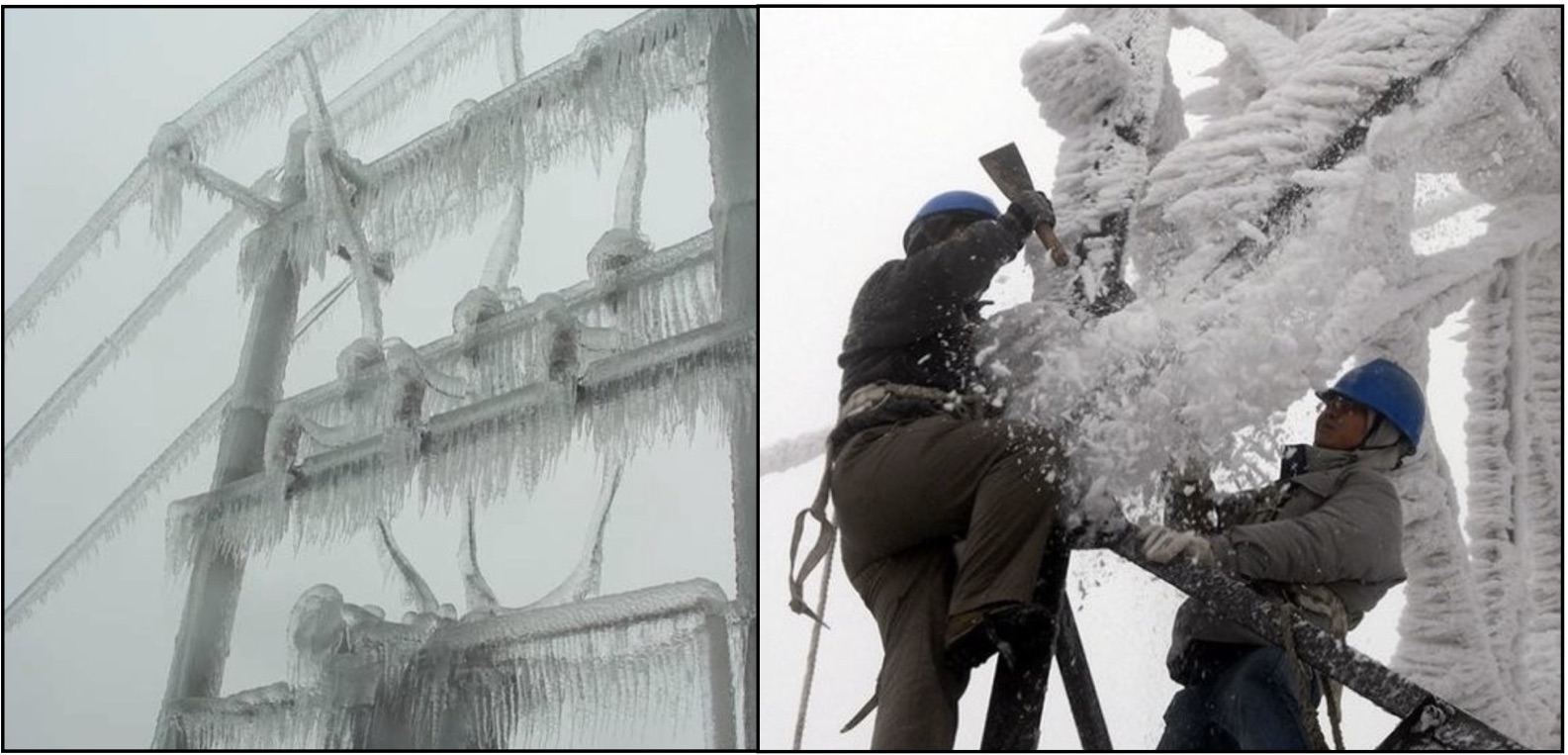
Freezing rain blanketed power lines and transmission towers. Image via Weibo
According to the ministry of civil affairs, the storm was to blame for a direct economic loss of USD22.3 billion. This does not include the incalculable personal losses and the razing of 30 years’ worth of reforestation by ice and subsequent forest fires that spring.
China’s power grid was ravaged with the collapse of 36,740 transmission lines, 8,381 towers and 2,018 transformer stations, as reported by the China Electricity Council that year. Telephone lines and cell towers were also severely damaged which resulted in an impeded response to the crisis.
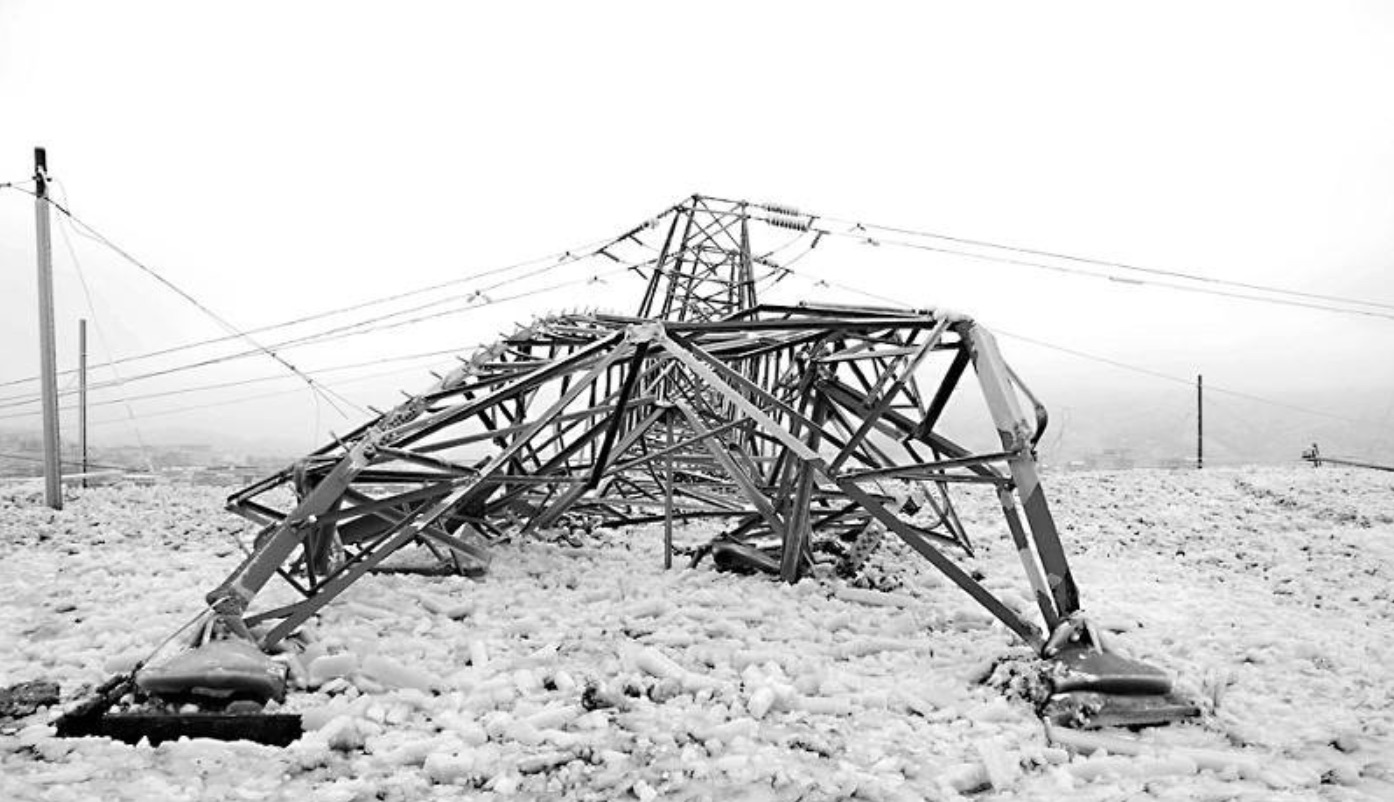
Collapsed transmission tower. Image via Weibo
In Guizhou alone, 80% of power supply stations were damaged. The city of Chenzhou, Hunan province, and its four million residents were without power for multiple weeks. Millions of families did not have access to running water or the ability to cook or heat their homes. Even power stations that initially remained operational were rapidly depleted of coal reserves as transportation came to a halt.
Furthermore, since China’s eastern railway network had long since switched from diesel to electric trains, the railway network was literally without power. Nearly six million passengers were stranded in railway stations alone in the lead up to the Spring Festival, the world’s largest human migration.
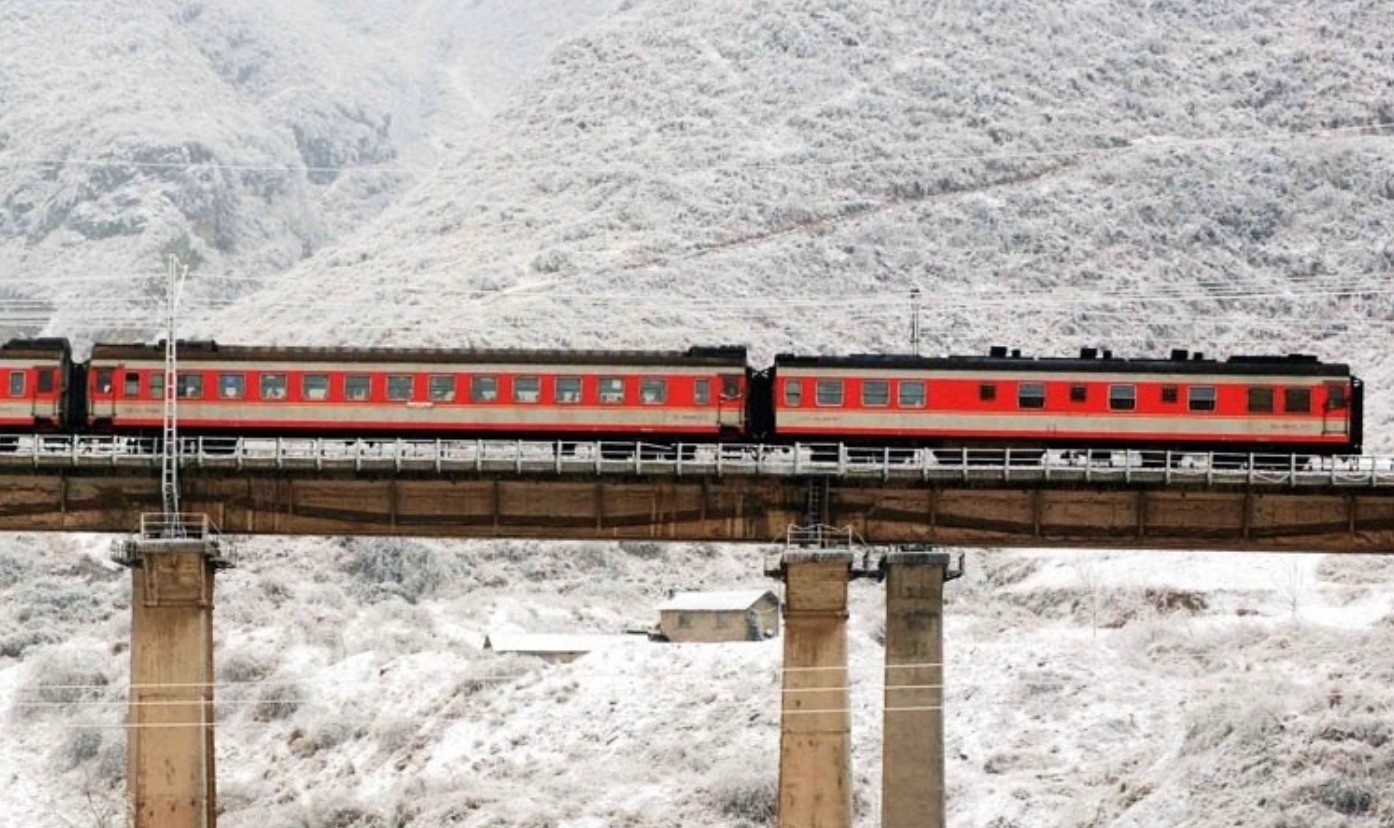
An electric train stranded on a viaduct. Image via Weibo
By Monday, January 28, 19 airports had been closed and the New York Times reported that 10,000 people were stranded at Guangzhou Baiyun Airport.
Guangzhou railway station, a major transport hub for migrant workers returning to their hometowns for the holiday, was at a standstill as more than 800,000 workers waited in the vicinity of the station to board trains that were delayed indefinitely, according to CNN. Riot police were called in when some workers stormed a barricade to enter the trains.
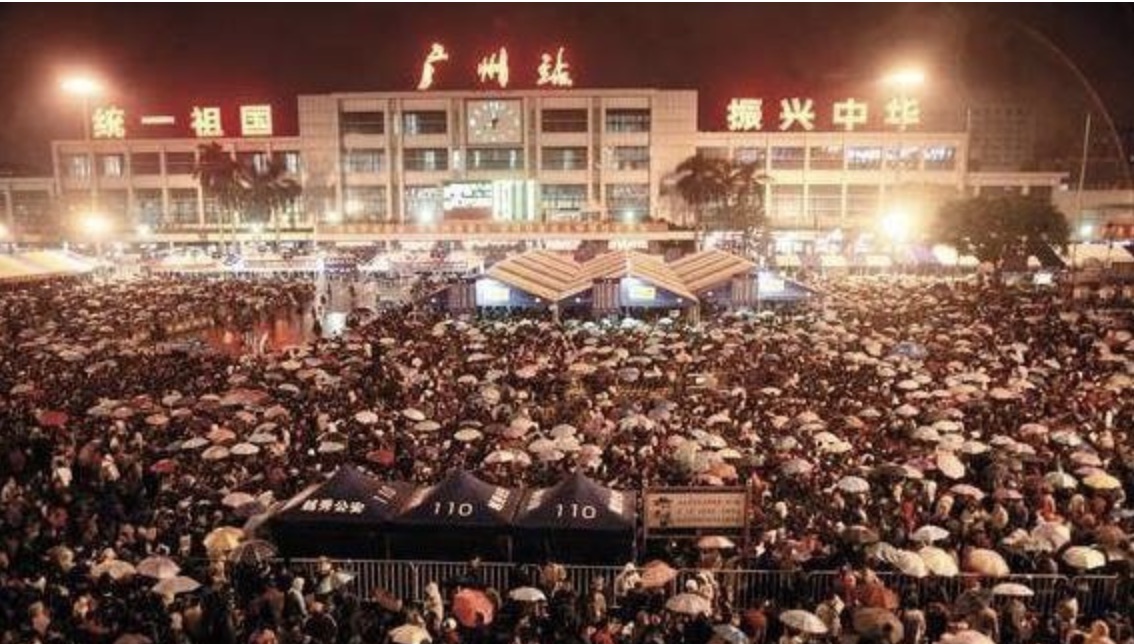
Stranded migrant workers waiting for trains to resume service at Guangzhou Railway Station. Image via Weibo
Highways were backed up by stranded vehicles and icy conditions and millions of police officers were dispatched nationwide to help clear the roads safely, along with ice-clearing machines. China Daily reported that one section of an expressway in Hunan was gridlocked with 20,000 people trapped in their vehicles.
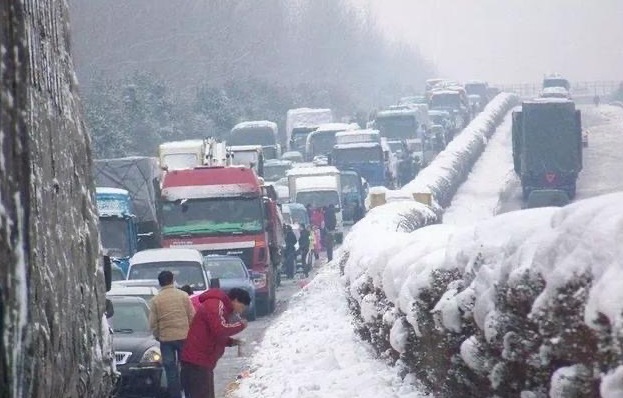
Drivers trapped on a blocked highway. Image via Weibo
The sheer weight of the snow and freezing rain also wreaked havoc on the region. The official tally stated that 1.7 million people were displaced by the storms, largely due to the 1.7 million buildings that were partially damaged and the half-million that collapsed entirely.
The carnage extended to forests and wildlife as well as agriculture and livestock. Albeit impossible to accurately measure the impact on wildlife populations across the 800 plus natural reserves in the affected area, Mangshan Natural Reserve in Hunan reported that 200 protected animals such as monkeys and 10,000 birds of varying species died of freezing or starvation as a direct result of the storms. At one reserve in Guangdong province, butterfly populations dropped by 90% and some species’ never recovered.
For nearly three decades, the region had been aggressively planting trees in an effort to improve the environment and create financial opportunities in rural areas. China is responsible for 25% of the net increase in vegetated areas since the mid-nineties, according to Xinhua. China’s Forest Resources Management Department reported that the storms demolished more than 20 million hectares, or 10% of the country’s forest cover.
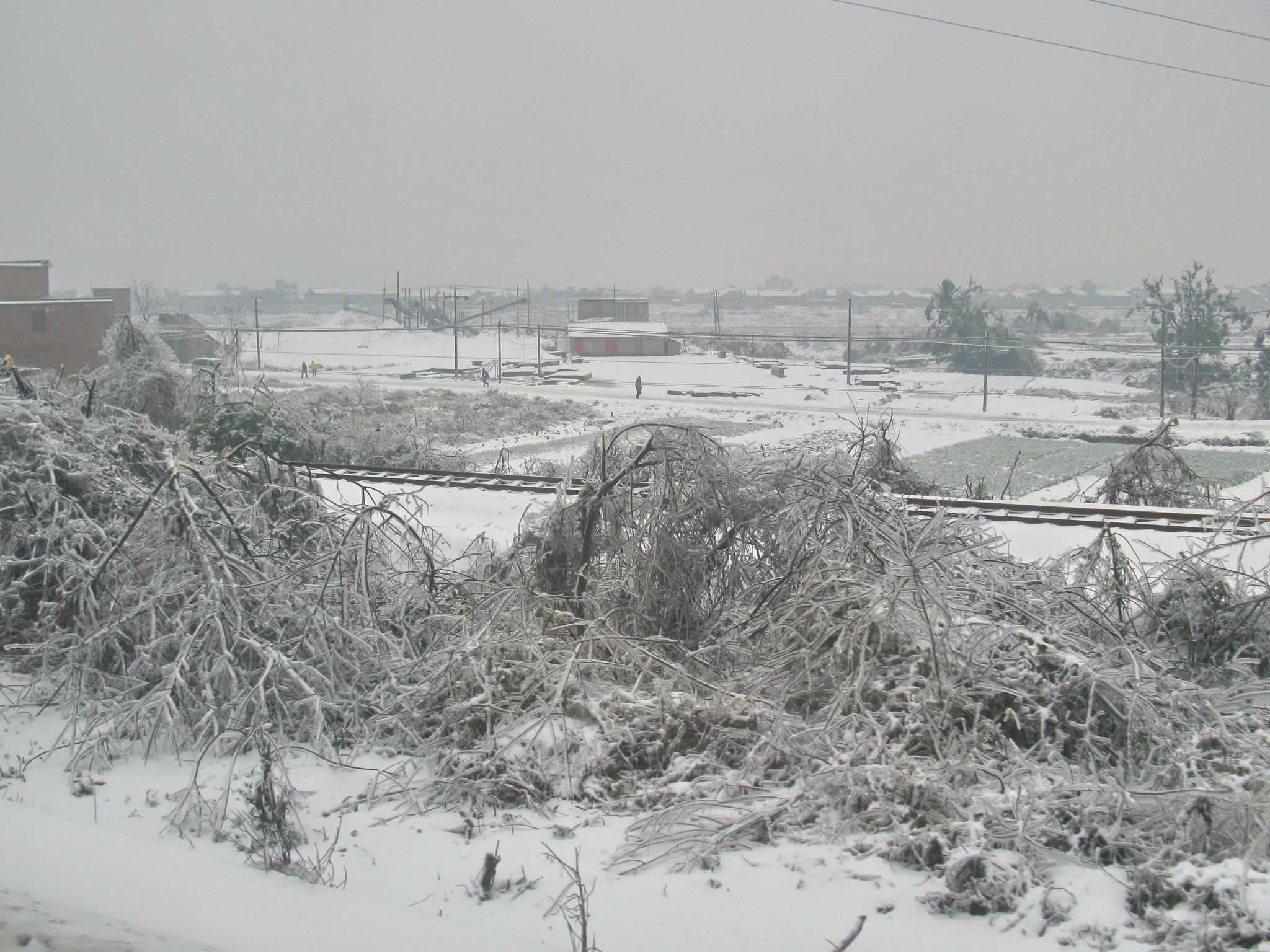
Fallen trees in Leiyang, Hunan province. Image via Wikimedia
The trajectory of these plantations was hampered drastically by the storms as many of them were not yet strong enough to withstand the force of the storms. The varieties of trees planted were purposefully selected, but not for ice-storm resilience. A secondary consequence of these young forests being flattened was a significant increase in wildfires the following spring. In Hunan alone, there were 11 times as many forest fires as the average of the preceding ten years.
Another incalculable loss is that this forested and reforested area in the south-central region accounted for 65% of China’s carbon dioxide-sequestering ability. The time required for these areas to grow back is exacerbating China’s pollution and contribution to global warming.
The forests also contributed to the economic loss caused by the storms as rural households often depend on these plantations for their livelihood. Crops and livestock on farms in the region did not escape the wrath of the storms either. The China Ministry of Agriculture and Rural Affairs reported that 75 million livestock (predominantly fowl) were killed and 40% of the region’s winter crops were destroyed. The loss of local produce and the crippled transportation system resulted in extreme food shortages. Some cities saw food prices skyrocket by 1,000% and the price of instant noodles in Chenzhou jumped to almost USD10 per serving.
The storms highlighted the vulnerability of many systems, from electricity and transportation to food security. So far in 2021, we’ve already seen the biggest snowstorm to hit Spain’s capital Madrid in 50 years and a murderous dump of snow more than 200 centimeters deep in some areas of coastal Japan. Here’s to hoping we don’t see a repeat of those 2008 winter storms in China.
For more history stories, click here.
[Cover image via Weibo]





















0 User Comments